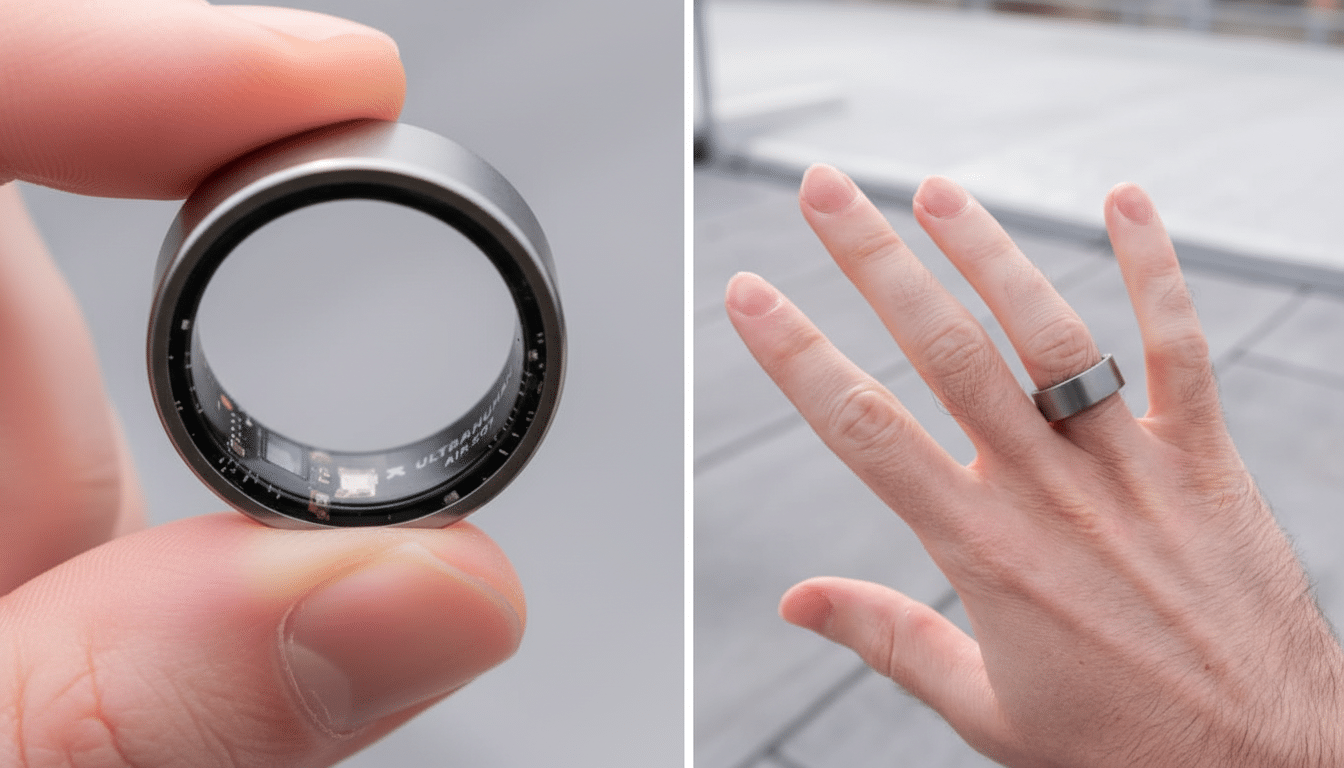I craved a fancy smart ring to melt away on my finger and quietly impart reliable health insights. But after four months with the Ultrahuman Ring Air, I was coming down from my honeymoon period and faced a truth: So-so design, promising metrics, and just too many misses to recommend this above a solid smartwatch or battle-tested fitness band.
Four Months In, the Shine Wears Off This Smart Ring
The form factor is definitely sexy. It’s low-key, but it’s comfortable, and is more easily worn in daily life than a chunky watch. But there’s pleasantness, and there’s reliability. Ultrahuman markets itself for up to six days of battery life; I was getting closer to three, possibly four. That’s fine compared with some top-shelf timepieces, but it undermines one of the ring’s primary promises — forget-it’s-there durability.

Battery is only half of it. The other half is confidence in the data. A machine that is this invisible has to be bulletproof in the backstage. It wasn’t.
Accuracy Still Lags Behind Bulkier Wearables in Tests
Rings face physics. Smaller sensors, a tighter space for antennas, and less processing headroom all make reliable capture more difficult than on a watch with larger photodiodes and stronger radios. The finger makes a good resting site for heart rate and HRV — many lab validations show a high correlation with ECG at rest — but once you start to move, the party’s spoiled.
In testing, steps and active minutes strayed with double-digit swings from a GPS-enabled watch on same-day comparisons. Workouts magnified the variability. The resting heart rate was always nearby but not consistently near enough to completely trust trend lines. Sleep metrics were the most frustrating: total sleep time was generally within striking distance, but interpretable sleep stage splits varied a lot. That’s in line with peer-reviewed research from Stanford-affiliated scientists and others claiming accuracy of about 60–70% for sleep staging relative to polysomnography, with wake identification the toughest nut to crack.
And none of this is brand specific. That’s the category limitation today: Rings do passive, low-intensity tracking really well and start to struggle when motion, sweat, and signal noise are introduced.
Silent Synchronization Gaps Undermine Trust
The larger red flag was unseen: data just wasn’t syncing unless the app was open. Even with battery optimizations off, weeks vanished as the ring waited for a manual handshake that never arrived. No alerts, no warnings — just gaps.
Background restrictions are infamous on some Android phones — developer Chris Lacy documented honest-to-goodness app-killing back in 2018 — but that’s not how the burden should land. A health wearable needs to identify backlog, queue transfers until they are successful, and indicate when there has been a missed sync before onboard storage rolls over. Some rings, older iterations from rival brands among them, have gradually gotten better over the years. It’s solvable. It’s also table stakes.

Price And Subscriptions Slightly Skew The Value
Smart rings generally range in price from $250 to $400, and some models lock the most essential insights behind a monthly subscription. At that level of price, a watch from the big players gets you onboard GPS, bigger sensors, and more capable workout modes, safety features, and mature ecosystems. Sales trackers like the research firms IDC and the Consumer Technology Association continue to file rings under a small slice of wearables; you can imagine why: You pay more for less capability and a narrower use case.
Granted, rings are low profile and high style. If you want screens off your wrist, that matters. But if what you want is reliable health and fitness information, the numbers don’t add up — at least not yet.
Fitness Use Is Clumsier Than It Appears
The chemistry dissipates in the gym, though. Rings can scrape against barbells and cable handles, they may pinch you under load — and they get scratched up quickly. There’s good reason so many coaches and gyms tell you to take off your jewelry when lifting. Watches will try not to touch and record workouts “with fewer artifacts.”
What Must Change Next for Smart Rings to Succeed
Three changes would revolutionize the category.
- Much more robust background sync with proactive notifications and greater on-device storage.
- Sensor and algorithm advancements zeroed in on motion noise, combined with clear validation against gold standards — for example, independent lab results made public by organizations such as the American Academy of Sleep Medicine or university sleep centers.
- Better pricing that doesn’t lock basics behind subscriptions.
For now, my advice is practical. If you prioritize comfort and low-profile tracking, and if you’re prepared to monitor the app closely, a smart ring can be a great complement to wearing a watch. If you’re after accuracy, reliability, and more features for the same money? A good smartwatch or a similarly priced fitness band will beat it.
For passive trends I’ll keep the ring, because I’ve discovered the right rituals to tame it. But now, four months later, it hasn’t been the health buddy I wanted — or the wearable I would recommend to most people right now.

